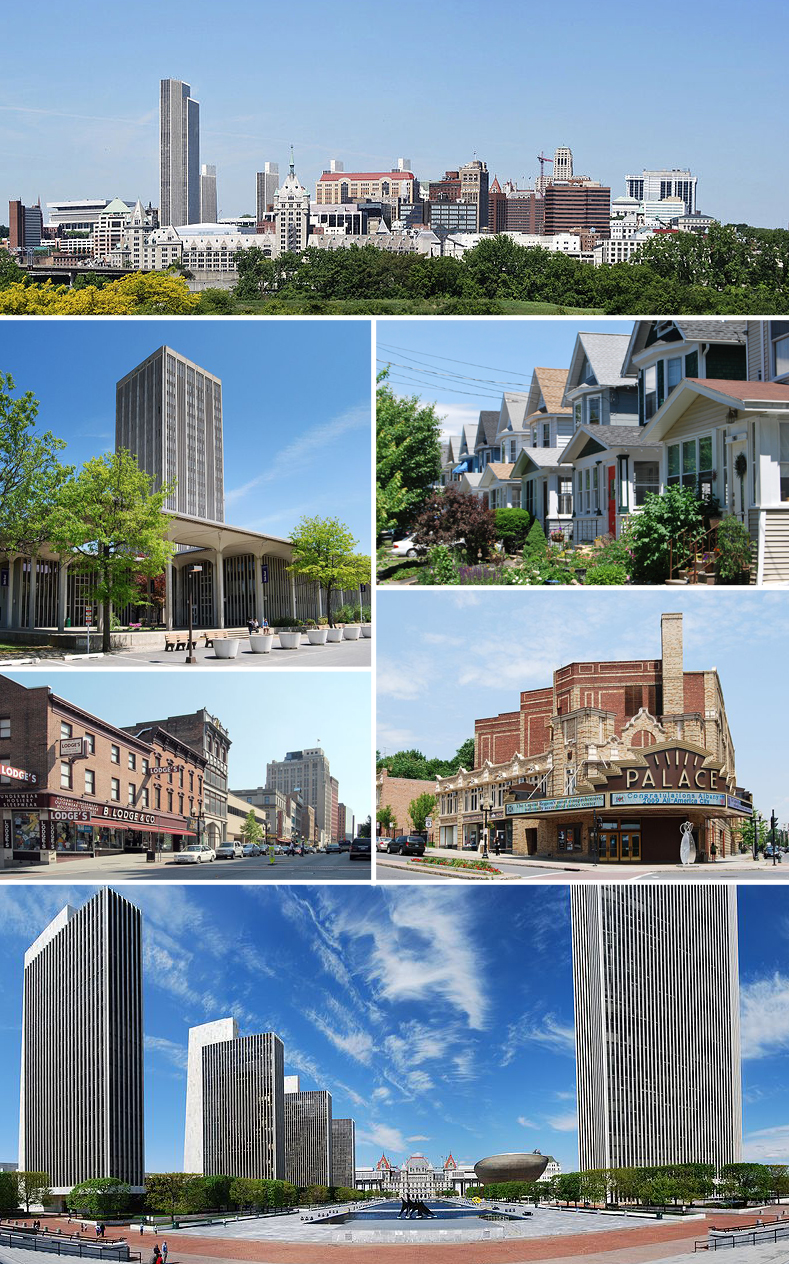
Albany, New York
Albany (/ˈɔːlbəni/ ⓘ AWL-bə-nee) is the capital and oldest city in the U.S. state of New York and the seat of and the most populous city in the county of the same name. It is located on the west bank of the Hudson River, about 10 miles (16 km) south of its confluence with the Mohawk River, and about 135 miles (220 km) north of New York City.
Albany
United States
1614
1686
21.94 sq mi (56.81 km2)
21.40 sq mi (55.44 km2)
0.53 sq mi (1.38 km2)
2,811.6 sq mi (7,282 km2)
148 ft (45 m)
378 ft (115 m)
2 ft (0.6 m)
99,224
100,826 (US: 329th)
4,635.77/sq mi (1,789.90/km2)
593,142 (US: 73rd)
2,186.3/sq mi (844.1/km2)
1,170,483 (US: 63rd)
416.3/sq mi (160.7/km2)
Albanian[8]
36-01000
977310[6]
The city is known for its architecture, commerce, culture, institutions of higher education, and rich history. It is the economic and cultural core of the Capital District of the State of New York, which comprises the Albany–Schenectady–Troy Metropolitan Statistical Area, including the nearby cities and suburbs of Troy, Schenectady, and Saratoga Springs. With an estimated population of 1.1 million in 2013, the Capital District is the third most populous metropolitan region in the state. As of 2022, Albany's population was 100,826.
The Hudson River area was originally inhabited by Algonquian-speaking Mohican (Mahican), who called it Pempotowwuthut-Muhhcanneuw.[9] The area was settled by Dutch colonists who, in 1614, built Fort Nassau for fur trading and in 1624, built Fort Orange. In 1664, the English took over the Dutch settlements, renaming the city Albany in honor of the Duke of York's Scottish title, the Duke of Albany, which takes it name from Alba, the Scottish Gaelic name for Scotland.[10] The Duke of Albany would later become James II of England and Ireland and James VII of Scotland.[11] The city was officially chartered in 1686 under English rule. It became the capital of New York in 1797 after the formation of the United States. Albany is the oldest surviving settlement of the original British thirteen colonies north of Virginia. No other city in the United States has been continuously chartered as long.[12]
In the late 18th century and throughout most of the 19th, Albany was a center of trade and transportation. The city lies toward the north end of the navigable Hudson River. It was the original eastern terminus of the Erie Canal, connecting to the Great Lakes, and was home to some of the earliest railroads in the world. In the 1920s a powerful political machine controlled by the Democratic Party arose in Albany. In the latter part of the 20th century, Albany's population shrank because of urban sprawl and suburbanization. In the 1990s, the New York State Legislature approved for the city a US$234 million building and renovation plan, which spurred redevelopment downtown.[13] In the early 21st century, Albany's high-technology industry grew, with great strides in nanotechnology.[14][15]
The city of Nijmegen, Netherlands connected with Albany following World War II. With the help of the Catholic university in Albany, the Catholic University of Nijmegen (Radboud University Nijmegen) rebuilt its partly destroyed library, with over 50,000 books being donated to the Dutch university. To show its gratitude for post-war assistance, the city sent Albany 50,000 tulip bulbs in 1948; this act led to the establishment of the annual Tulip Festival.[104] Most of the other connections were made in the 1980s during Mayor Whalen's term in office as part of his cultural expansion program.[104]
Albany's sister cities are:[357][358]